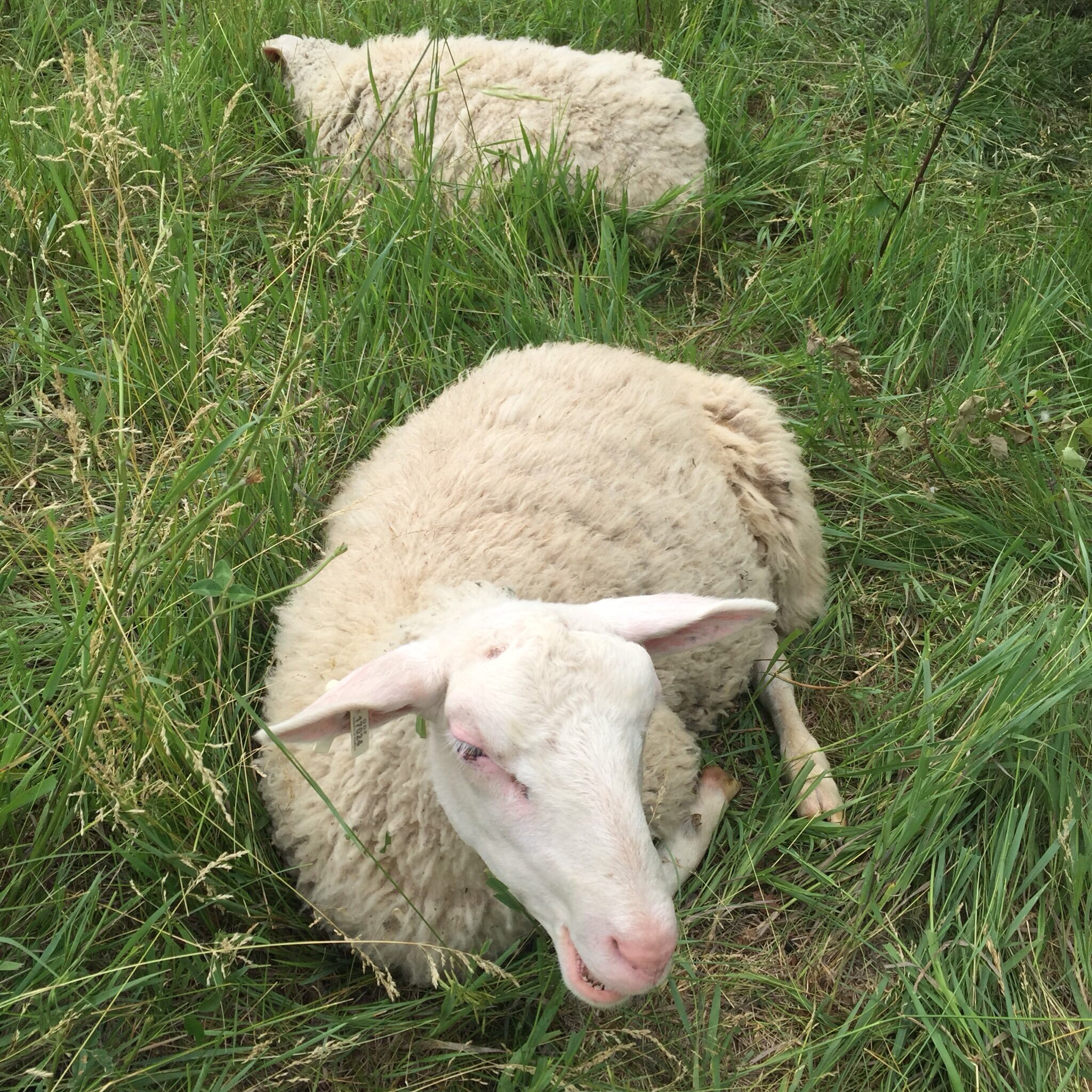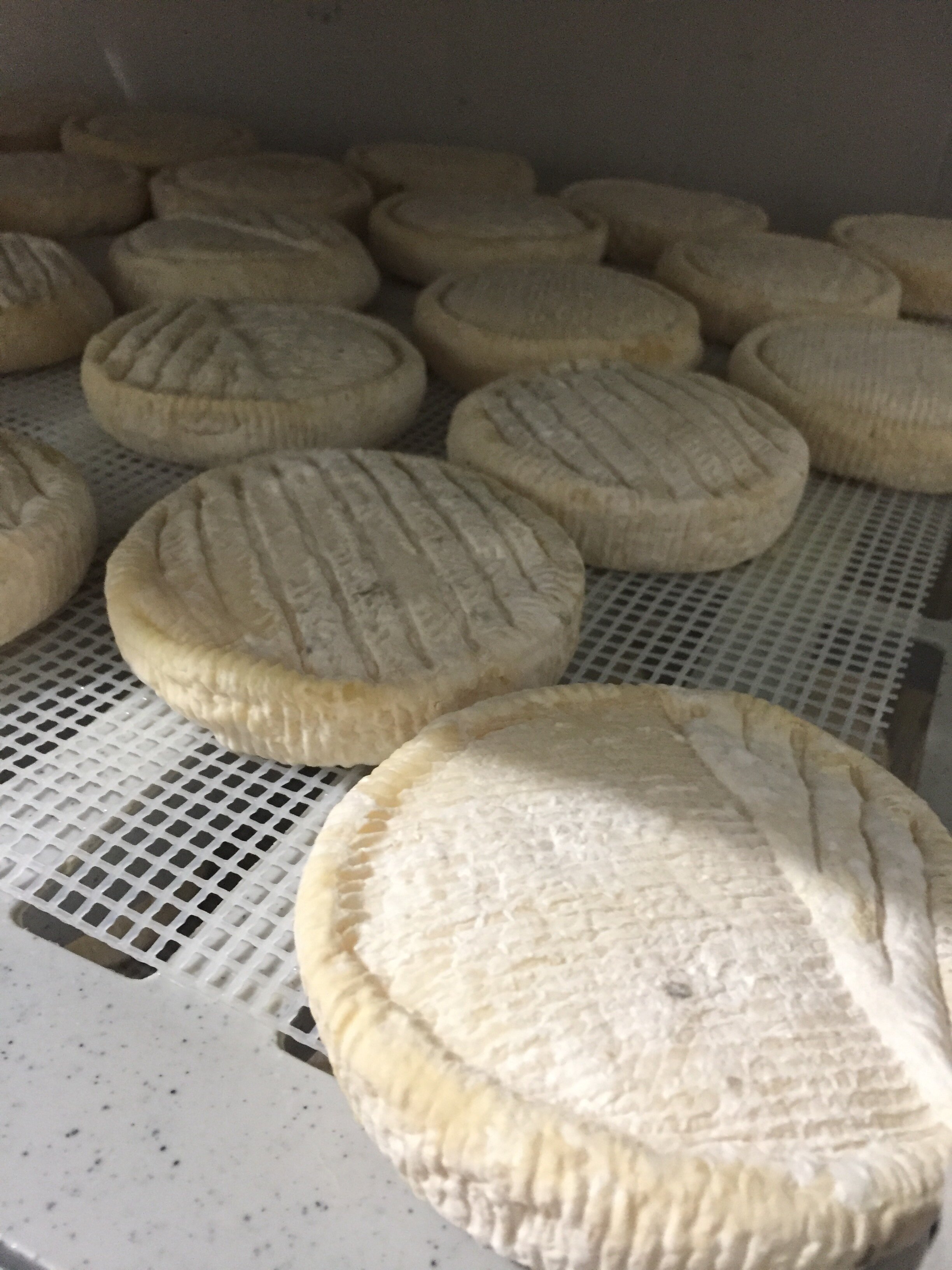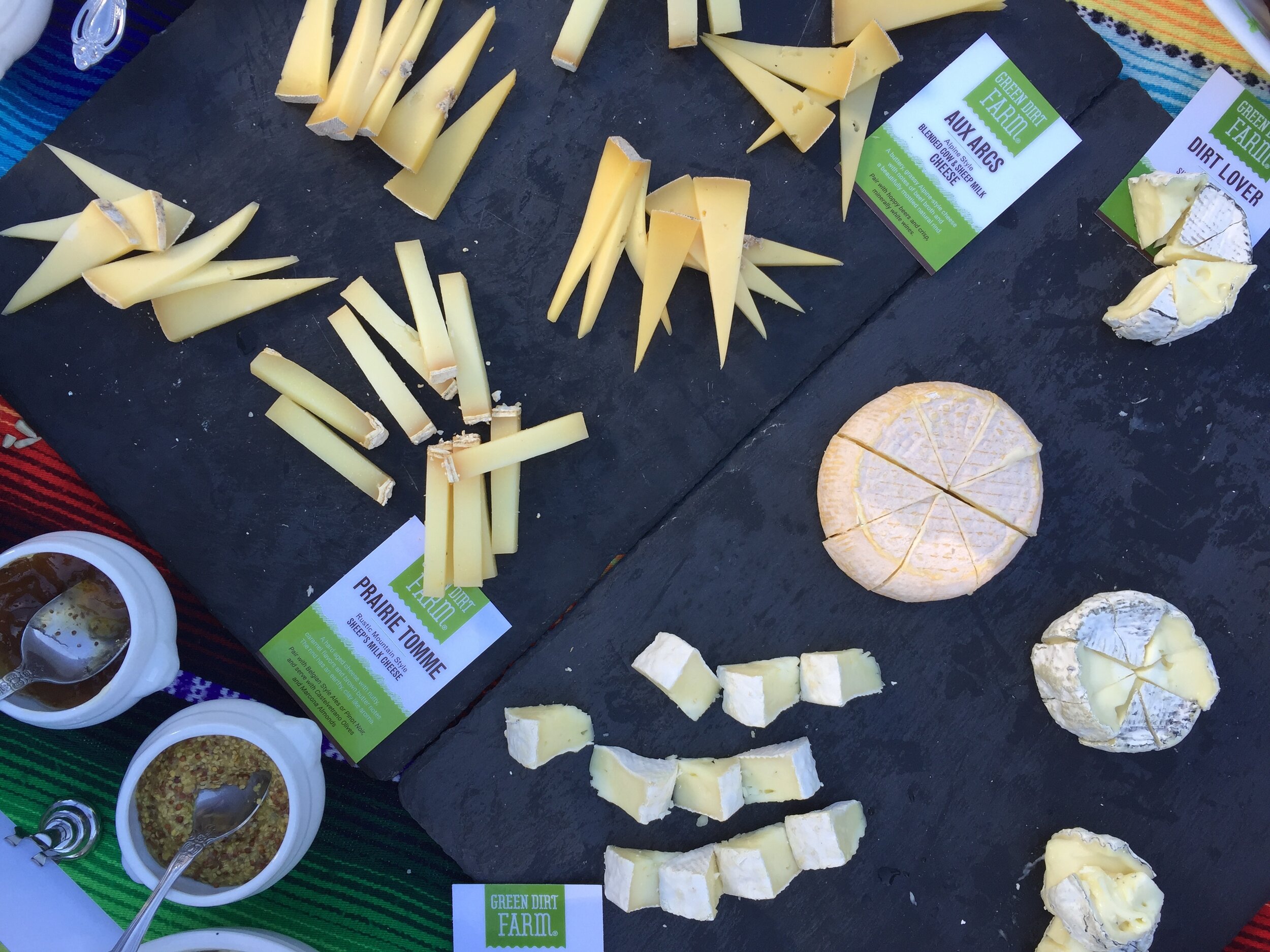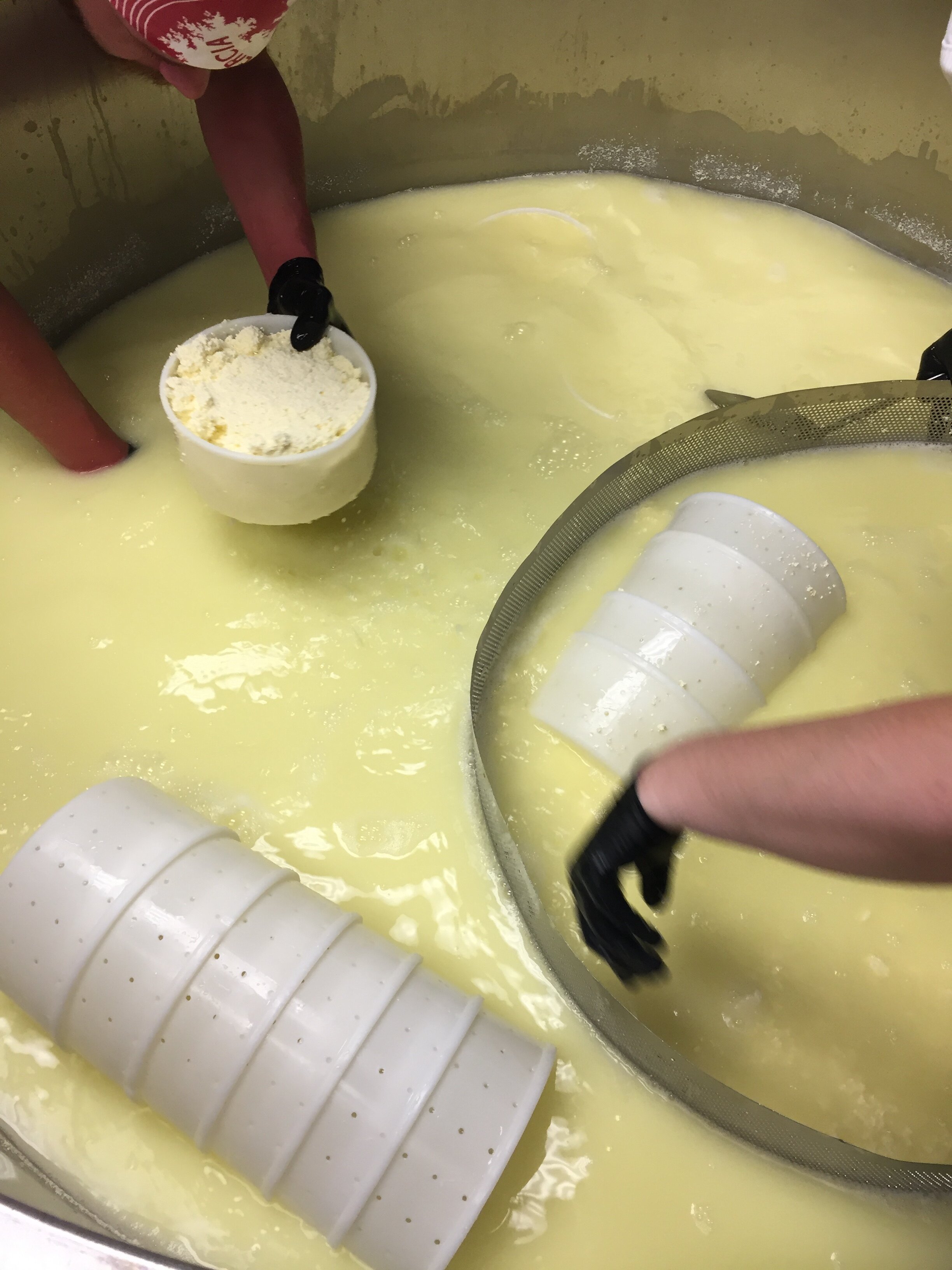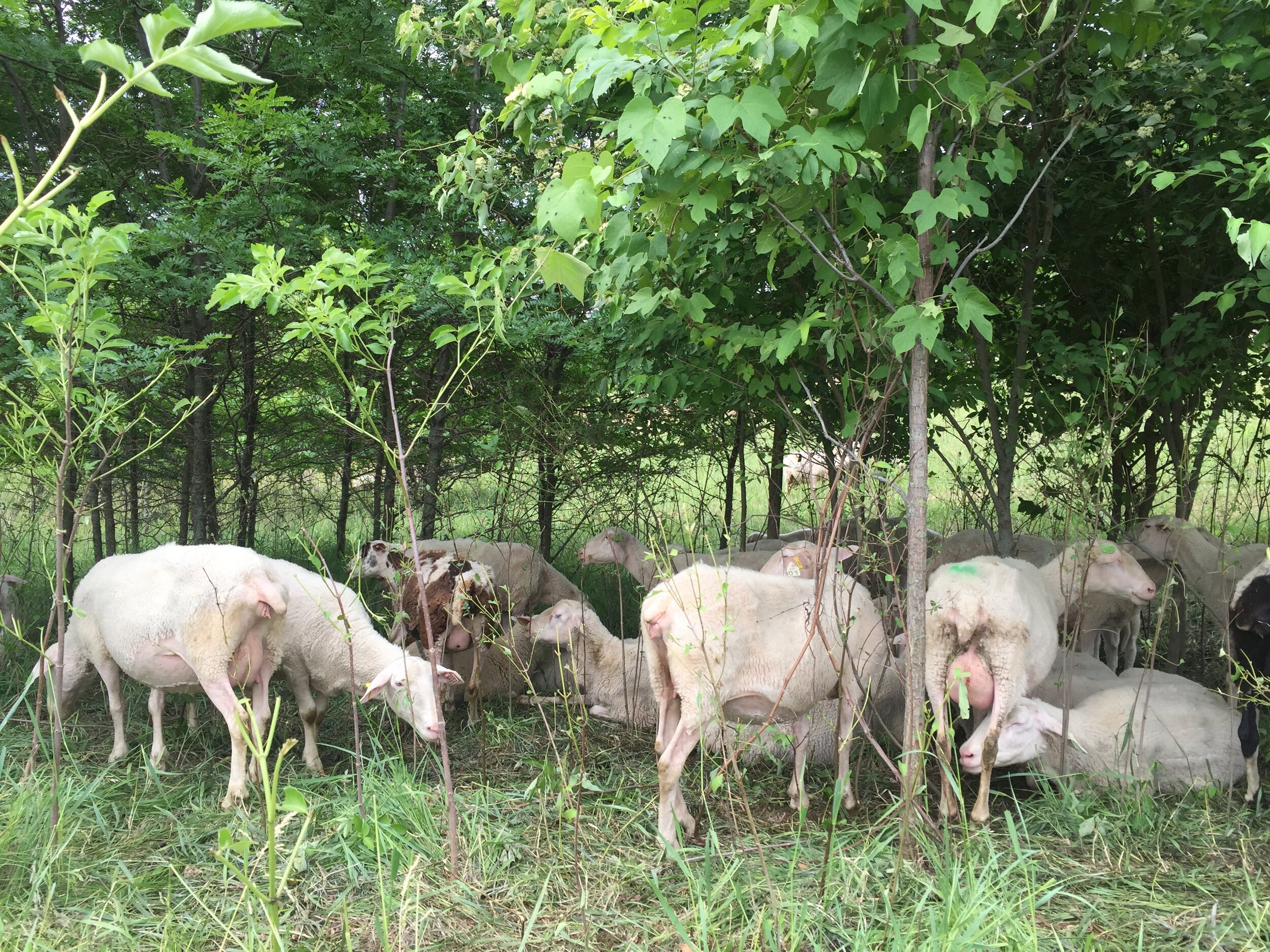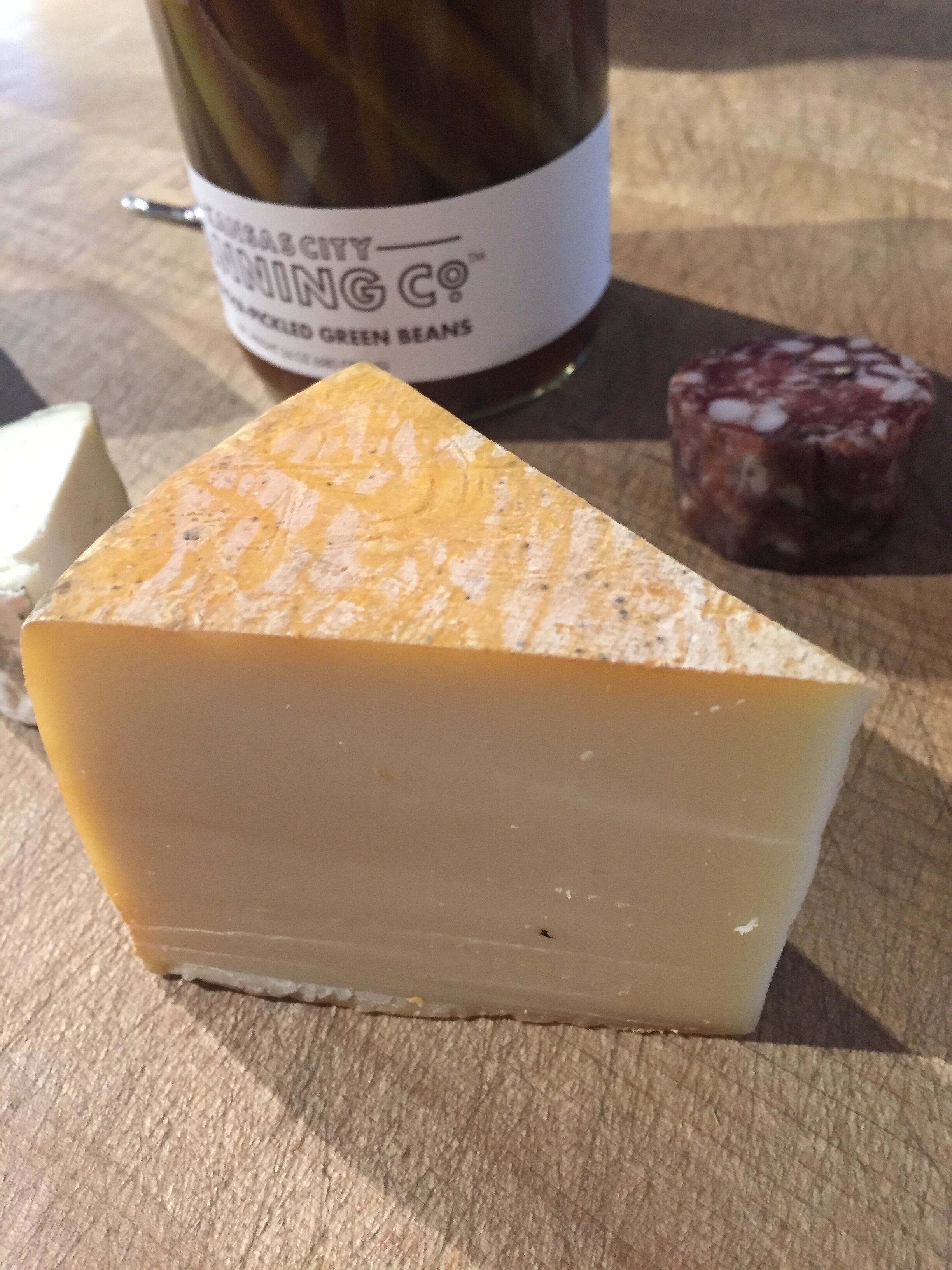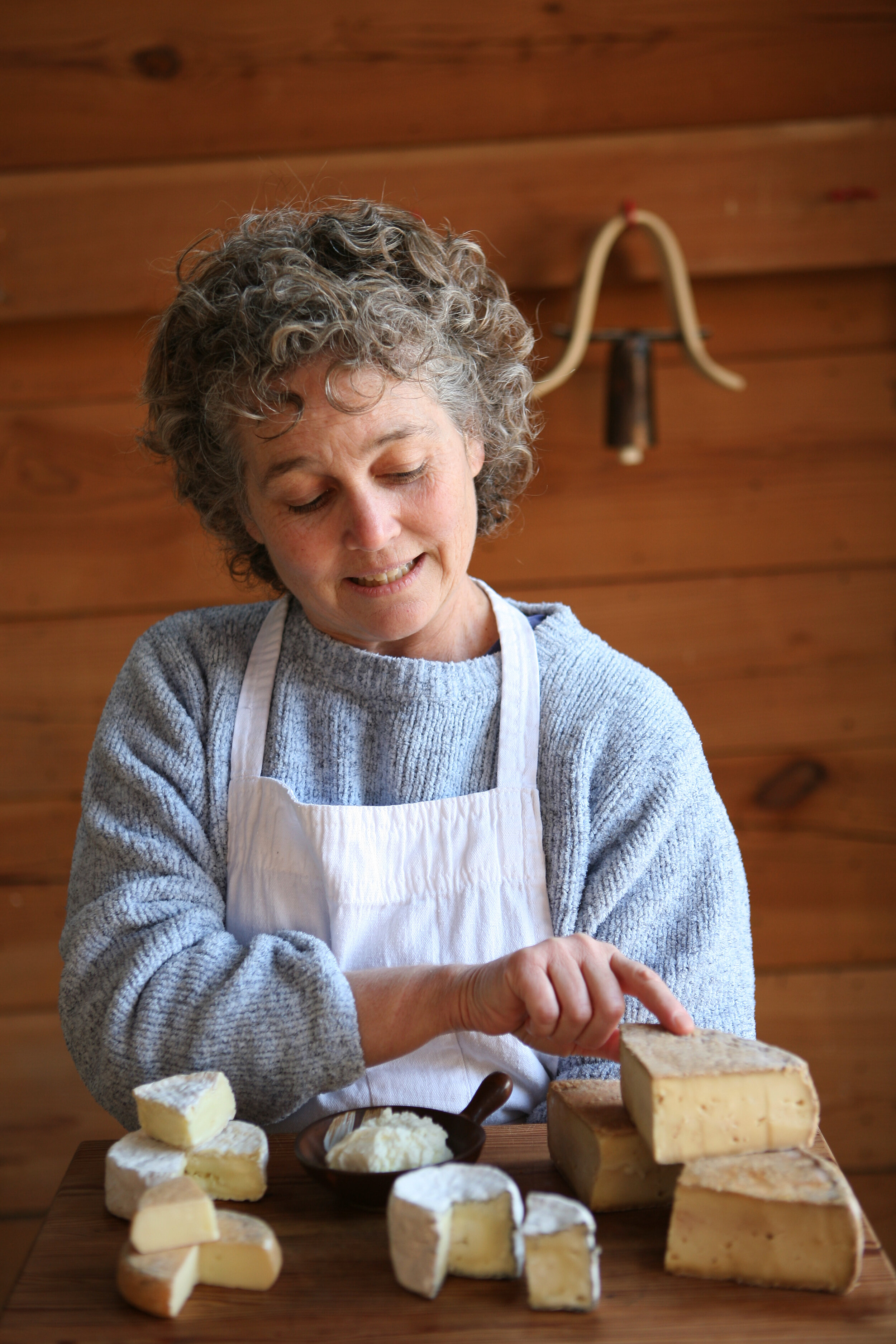For the Love of Cheese: How this scientist fell in love with dairy farming
By Nicole Newman // Photos courtesy of Green Dirt Farms and tasteMAKERS
“In order for us to have nutritious pastures to feed the sheep, we need to have good soil to grow on. This is true for all farms, but not all farms recognize it or care for it as much as they should. It’s the thing on which any healthy farm is built: a healthy soil structure.”
When Sarah Hoffmann of Green Dirt Farm in Weston, Missouri, decided to start a sheep’s milk dairy farm, she devoted herself to starting with the soil, focusing on farming practices that were environmentally sustainable. Developing biodiversity in her pastures meant that her flock of sheep were eating a healthy range of seasonal plants, and the result is exceptional cheese made from the high-quality milk her sheep produce.
In season one, we met up with Hoffmann to learn more about her farm and the community partnerships that she has fostered. Today, we’ve reconnected with her to get on update on Green Dirt Farm and what’s happening on the farm today.
Nicole Newman: When we interviewed you in season one, you told us a lot about the rare qualities of sheep’s milk and also about your natural farming practices. Can you remind readers what “green dirt” is?
Sarah Hoffmann: The reason we call ourselves Green Dirt is because we know that everything starts and ends with our soil. We do everything we can to make good, healthy soil. It’s dirt that has been treated in a way that renews and replenishes it. It supports a healthy soil structure and good microbiomes. It’s dirt that has not had any poison or toxins on it.
NN: Why do you choose to use farming practices like mineral addition, cover cropping and rotational grazing at your family farm?
SH: Those are the things that help to replenish and build the soil structure. For example, rotational grazing. What happens is that we allow them to eat down about four inches. A general rule of thumb is take half, eat half. What happens in the soil is that these plants, underneath the soil, as the grass goes tall, the corresponding amount of roots that the animals are eating shrinks the size back. That way, we are pulling carbon and organic matter to the soil. It’s really important for helping to build a soil structure that bugs and other plants can come in and work on it. It’s a cycle of the plants growing, shrinking back, and then growing again. The organic matter helps sequester carbon and enriches the soil with nutrition.
The other support thing we do is not put any herbicides and pesticides in the soil. Those are toxins that have a big impact on plant diversity. It’s also important for a response to climate change. It makes sure we aren’t impacting the fungal growth, insects beneath the surface.
NN: Why is soil health so important?
SH: It’s very, very literally the foundation on which any farm is built. In order for us to have nutritious pastures to feed the sheep, we need to have good soil to grow on. This is true for all farms, but not all farms recognize it or care for it as much as they should. It’s the thing on which any healthy farm is built: a healthy soil structure. If we didn’t have healthy soil, we wouldn’t be able to have healthy grass and then the sheep wouldn’t be able to produce as much. It also is important for ecological diversity, which lends to the flavor of the milk.
NN: From what I understand, you were in a completely different industry before you began Green Dirt Farm. How did you learn to farm and how did you learn to use practices that were so beneficial to the soil?
SH: I started my professional life as a physician with an interest in infectious diseases. Before I went into medicine, my undergraduate training was in chemistry. That foundation and knowledge base really served me well in cheese making and farming. As a chemistry major in the late ‘70s and ‘80s, one of the things that chemists did was work in pharmecueticals and pesticides. When I began to think, “maybe I could have a career making pesticides,” I was disturbed by that.
Being a child of the ‘70s, we began to think of environmental concerns and that set me on a path where I questioned whether it was right or even ethical to use our knowledge of chemistry to create the kinds of things that destroy soil and animal life. There are some applications where it’s important, but I think we’ve way overused them in the name of progress. We have not been thoughtful or careful about how we’ve applied our knowledge of chemistry because we are so focused on profits.
That’s what got me interested in having an organic farm in the first place. Once my mind was set, I apprenticed with an organic vegetable farmer in Kansas City, Katherine Kelly. I undertook to learn about conventional dairy farming and how we might do it differently. I joined the Dairy Alliance of North America and then went to as many conferences as I could. That’s how I got my start.
NN: Throughout the year, different types of grass lead to different flavors in your cheese. How do you adapt to those changes and how do you maintain consistency with an ever-changing environment?
SH: It’s a real challenge for artisan cheese makers. One of the things artisan cheese makers don’t do is standardize milk. Industrial cheese makers standardize their milk to a very specific chemical composition to get the same product every time. But a lot of what artisan cheese makers do is adapt our recipe to match the changes taking place in an animal lactation season.
I feel like part of the real beauty and glory of artisan cheese making is the way it evolves throughout the seasons. We find customers who like certain products in the spring but won’t buy it in the fall. That’s part of what we are doing as artisan cheese makers: We’re helping people recognize the changes in the seasons. As the cheese changes with the seasons, you can tell what the changes are and if you know the cheeses well, you can appreciate it. It’s really a celebration of change.
Our goal, while we don’t want the cheese to be unrecognizable, we do want to enjoy and reflect on how a cheese has evolved throughout the seasons. The art of a cheese maker is in adapting the recipe to the milk rather than changing the milk to adapt to the recipe.
NN: Green Dirt Farm is Animal Welfare Approved. Can you tell us what that means and why that is so important to you?
SH: Animal Welfare Approved certification, I think, is better than organic. The organic standard does not have good provisions for animal welfare. You could have an animal who is kept in an eight foot by eight foot space their whole life and that’s a model I firmly reject. That’s treating animals like they’re robots or machines.
AWA comes from A Greener World. Their goal is not only to monitor our humane standards but also our environmental standards. That acts as a way to validate what we are doing. If we have an organization like A Greener World [that] comes in and assesses what we do and puts limits on what we do as far as practices, our customers have validation and don’t just have to take our word for it. I particularly like the AWA certification because they look at the environmental practices and their requirements are among the most strict of a certification. Consumer Reports says [it is] the most meaningful humane label out there.
Not just for the marketing aspect of it… we do this because we feel strongly about what sets our dairy about from industrial dairy. We care about and pay attention the humane aspects of taking care of our animals. Some of the practices include that our animals roam freely outside every day, we don’t do unnecessary procedures and when we process meat, the processor has been inspected and approved so slaughter practices are as humane as possible.
NN: Tell me about working with sheep. What’s that like?
SH: Sheep are a wonderful animal and they’re fun to work with. They can be aggravating but they’re very sociable and very hierarchical. It’s interesting to see them in action. They often hang together in family groups. Often times, they come into the {milking] parlor at the same time. They’re prey animals so they’re used to being anxious. They can be flighty when they get scared. They’re very vulnerable. There’s something about working with sheep that makes you feel needed.
NN: How many varieties of cheese does your milk produce?
SH: In recent years, we’ve started working with cow’s milk in addition to sheep’s milk. We source the cow’s milk from jersey farmers and some our sheep’s milk is sourced from Amish farmers. They’re all AWA approved just like I do. We four 100% sheep’s milk cheese and numerous blends of sheep’s and cow’s milk. We make fresh spreadable cheese in six different flavors.
NN: What’s your favorite kind of cheese that you make?
SH: I would say my favorite is our Bossa. It’s our signature washed-rind cheese and there are very few washed-rind cheeses in the world. In fact, we’ve entered it in the American Cheese Society’s annual competition in the American Originals category. We’ve gotten recognized every year in that category so we’re pretty excited about that. It’s also a bit of a problem child, though, because it’s harder to make and especially challenging at the beginning and end of the milk season. We can only make it in the middle of the season when the milk chemistry is stable.
Prairie Tomme is my favorite that is in the Makers Marketplace. It really expresses the wonderful flavors in sheep’s milk as it ages. It has these wonderful toasted nut and caramel flavors as it ages.
NN: Your farm is, in a way, a teaching farm. You are partially self-taught, you’ve taught your apprentice Rachel and now your daughter Eliza has a hand in the business. You also host events on the farm to teach the community. Tell me about your teaching methods and bringing new people into your work.
SH: I love telling people about cheese and the farm. When we are not in lock down or a pandemic, we do host a variety of events on the farm. Those always involve some type of discussion where we educate people about the cheese and our farm’s practices. They’re delicious classes that people get to come to and taste our cheese with wines, beers, chocolates, jams, jellies and more. You could put our cheese on anything! It’s that feeling of coming to a place and being delighted not only by a flavor experience but also a learning adventure. The way we do things is so unique and people are so delighted to learn something new.
NN: Why do you think sharing the maker movement with your employees and community is so important?
SH: In the biggest picture, it’s to raise consciousness and have people think about the current industrial paradigm of farming. How might we do it differently? We’re going to have to very soon. With climate change, for example, we want to be on the forefront and we don’t have all the answers, but what we do have is ways that it can work for us. And hopefully impress upon people a way to take that home to their town or to farmers nearby. Start the process of thinking about it.
NN: What’s next for Green Dirt Farm?
SH: Things have changed dramatically in the last six weeks. What I may have had as a goal at the beginning of the year has changed. At the beginning of the year, we had the goal to get to national distribution. That’s still a goal, but what we have found with the pandemic is that economically, we could deliver our cheese directly through online sales. We are working hard to get our cheeses that can be mass produced to the national level but are also working on improving our website so we can speak directly to individual customers.


